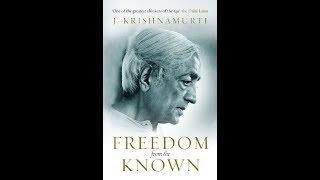Contents:
00:00:00 - Intro to Plato
00:02:14 - The Thesis of the Video
00:06:38 - Intro to Mithraism
00:08:10 - Mithra’s Vedic and Hindu Origins
00:13:50 - Proto-Indo European Diaspora
00:16:42 - Mithra’s Origins
00:22:20 - Roman Soldiers and the Extension of Mithraism
00:25:30 - The Mithraic Origins of Christianity and Zoroastrianism
00:33:35 - The Mithradaic Kings
00:36:32 - Chronos and Mithra
00:39:31 - The Old Gods and the New Gods
00:44:38 - Christianity Plagiarizes Zoroastrianism
00:46:00 - Iranian Barbarians and the Goths rule the West
00:49:40 - Manicheanism and a lost language
00:52:00 - Alexandrian Origins of Islam
00:55:00 - Muhammad was a Puppet
01:12:00 - Hinduism, Christianity, and Etc
01:20:23 - Zoroastrian Intro
01:23:30 - Zoroastrianism’s Hindu Origins
01:26:50 - Late Dating of the Zoroastrian Texts
01:29:00 - Zarathustra
01:37:15 - Titans and Ashuras
01:41:00 - The God of Wisdom, Prometheus, Ahura Mazda
02:09:00 - Pythagorus’ Zoroastrian Origins
02:24:25 - Plato and Ahura Mazda the Logos
02:33:00 - Heraclitean Game of Thrones
02:32:05 - the origins of Americanism and Gnosticism
02:50:00 - Carpocratian and Zoroastrian ties
02:56:30 - Mani and his influences from Buddhism
03:06:11 - Jewish origins in Mithraism
03:09:50 - Parthian Infiltration
03:19:30 - Promethean Intro
03:22:30 - Prometheus
03:35:00 - Why Allah/El hates Prometheus
03:45:30 - Atlas as a Promethean
03:50:00 - Prometheus as Light Bringer
03:55:00 - Sophianic Archons
03:58:20 - Marx and Heidegger as Promethean
04:01:30 - Against Submission
04:16:00 - The Birth of Art from Prometheus
04:34:37 - Christians the Social Engineers
04:44:00 - Noah’s Flood and Atlantas
04:47:00 - Satan, Lucifer, and Prometheus
04:55:20 - Plato Introduction
04:58:45 - Heraclites
05:04:20 - Plato’s Mystery
05:42:30 - Noble Lie
06:35:52 - How Christianity and Islam were socially engineered
https://www.patreon.com/GnosticInformant
Please Consider joining my Patreon to help finding scholars to bring on. Any amount helps me. Thank you existing Patrons.
2nd Channel:
https://www.youtube.com/@LateNiteGnosis
Follow me on Twitter:
https://twitter.com/NealSendlak1
Discord:
https://discord.com/invite/uWBZkxd4UX
Proto-Indo-European mythology is the body of myths and deities associated with the Proto-Indo-Europeans, the hypothetical speakers of the reconstructed Proto-Indo-European language. Although the mythological motifs are not directly attested – since Proto-Indo-European speakers lived in preliterate societies – scholars of comparative mythology have reconstructed details from inherited similarities found among Indo-European languages, based on the assumption that parts of the Proto-Indo-Europeans' original belief systems survived in the daughter traditions.
The Proto-Indo-European pantheon includes a number of securely reconstructed deities, since they are both cognates – linguistic siblings from a common origin – and associated with similar attributes and body of myths: such as *Dyḗws Ph₂tḗr, the daylight-sky god; his consort *Dʰéǵʰōm, the earth mother; his daughter *H₂éwsōs, the dawn goddess; his sons the Divine Twins; and *Seh₂ul, a solar goddess. Some deities, like the weather god *Perkʷunos or the herding-god *Péh₂usōn, are only attested in a limited number of traditions – Western (European) and Graeco-Aryan, respectively – and could therefore represent late additions that did not spread throughout the various Indo-European dialects.
Some myths are also securely dated to Proto-Indo-European times, since they feature both linguistic and thematic evidence of an inherited motif: a story portraying a mythical figure associated with thunder and slaying a multi-headed serpent to release torrents of water that had previously been pent up; a creation myth involving two brothers, one of whom sacrifices the other in order to create the world; and probably the belief that the Otherworld was guarded by a watchdog and could only be reached by crossing a river.
Various schools of thought exist regarding possible interpretations of the reconstructed Proto-Indo-European mythology. The main mythologies used in comparative reconstruction are Indo-Iranian, Baltic, Roman, and Norse, often supported with evidence from the Celtic, Greek, Slavic, Hittite, Armenian, Illyrian, and Albanian traditions as well.
One of the earliest attested and thus one of the most important of all Indo-European mythologies is Vedic mythology, especially the mythology of the Rigveda, the oldest of the Vedas. Early scholars of comparative mythology such as Friedrich Max Müller stressed the importance of Vedic mythology to such an extent that they practically equated it with Proto-Indo-European myths. Modern researchers have been much more cautious, recognizing that, although Vedic mythology is still central, other mythologies must also be taken into account.
Another of the most important source mythologies for comparative research is Roman mythology. The Romans possessed a very complex mythological system, parts of which have been preserved through the characteristic Roman tendency to rationalize their myths into historical accounts. Despite its relatively late attestation, Norse mythology is still considered one of the three most important of the Indo-European mythologies for comparative research, due to the vast bulk of surviving Icelandic material.
Baltic mythology has also received a great deal of scholarly attention, as it is linguistically the most conservative and archaic of all surviving branches, but has so far remained frustrating to researchers because the sources are so comparatively late. Nonetheless, Latvian folk songs are seen as a major source of information in the process of reconstructing Proto-Indo-European myth. Despite the popularity of Greek mythology in western culture,Greek mythology is generally seen as having little importance in comparative mythology due to the heavy influence of Pre-Greek and Near Eastern cultures, which overwhelms what little Indo-European material can be extracted from it. Consequently, Greek mythology received minimal scholarly attention until the first decade of the 21st century.
Although Scythians are considered relatively conservative in regards to Proto-Indo-European cultures, retaining a similar lifestyle and culture, their mythology has very rarely been examined in an Indo-European context and infrequently discussed in regards to the nature of the ancestral Indo-European mythology. At least three deities, Tabiti, Papaios and Api, are generally interpreted as having Indo-European origins, while the remaining have seen more disparate interpretations. Influence from Siberian, Turkic and even Near Eastern beliefs, on the other hand, are more widely discussed in literature.
#gnosticinformant #religion #mythology
- Category
- Spirituality/Religon Mythology


